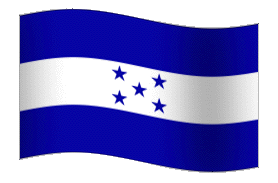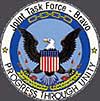
 Honduras
Honduras |
~ 720th Military Police Battalion Reunion Association History Project ~ |
 |
JTF-Bravo Formerly JTF-11 |
 Honduras Honduras |
|
Prelude |
World War II United States lend-lease funds granted to Honduras during World War II were used primarily for aircraft, engine parts, and support equipment. 1954 Following the signing of a military assistance agreement, the focus of United States aid shifted toward the army. New combat battalions were created, and increasing numbers of Honduran military personnel were trained at the United States Army School of the Americas. 1983 The United States and Honduras approved a new training agreement as an amendment to the 1954 military assistance agreement. Between 1983 and 1993, the United States and Honduras have carried out an almost continuous string of joint military maneuvers on Honduran soil. To facilitate the maneuvers and strengthen Honduras's military infrastructure, the Honduran government has built a network of roads, improved ports, and constructed additional airfields. The Enrique Soto Cano Air Base, located about ninety kilometers northwest of Tegucigalpa near Comayagüela, is operated by the Honduran Air Force but functions as the nerve center of intelligence gathering, communications, and logistical support for United States military operations in Honduras. While billing it as a temporary site, the Pentagon, began spending hundreds of millions of dollars in order to transform the once-sleepy facility into the most advanced base in Central America. 1985, February-May A simulated defense of Honduras from a mock Nicaraguan invasion was staged called Big Pine III and Universal Trek, the military exercises involved thirty-nine United States warships, as well as 7,000 United States troops and 5,000 Honduran troops. The exercises, which featured a massive amphibious landing on the northeastern coast of Honduras, were the most intricate peacetime military maneuvers the United States ever carried out in Central America. 1990's Honduras continued to serve as a military outpost for the United States. |
JTF-Bravo, a component of the U.S. Southern Command (SOUTHCOM), was established in 1983 under the name Joint Task Force-11, and was renamed JTF Bravo in August 1984. |
The Task Force is stationed at the Enrique Soto Cano semi-permanent air base, located about ninety kilometers northwest of Tegucigalpa near Comayagüela, a Honduran-owned facility built in 1982. Soto Cano is also home to the Honduran Air Force Academy. It was originally established to support U.S. efforts on behalf of Central American militaries and to “deter the Communist Nicaraguan Contra aggression” during the region's civil wars of the 1980s. At its 1980s peak, over 2,000 U.S. military personnel were stationed at Soto Cano. |
With the region at peace, SOUTHCOM describes JTF-Bravo's current mission as "to enhance cooperative regional security through forward presence and peacetime engagement operations."3 Specific activities include exercises, humanitarian and civic assistance (HCA) projects, disaster relief, and support for counter-drug operations. JTF-Bravo, a SOUTHCOM document adds, also assists Central American armed forces in "restructuring their militaries to fit changing security requirements. |
Use Your Browser Button To Return |